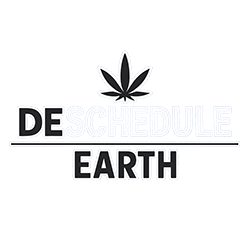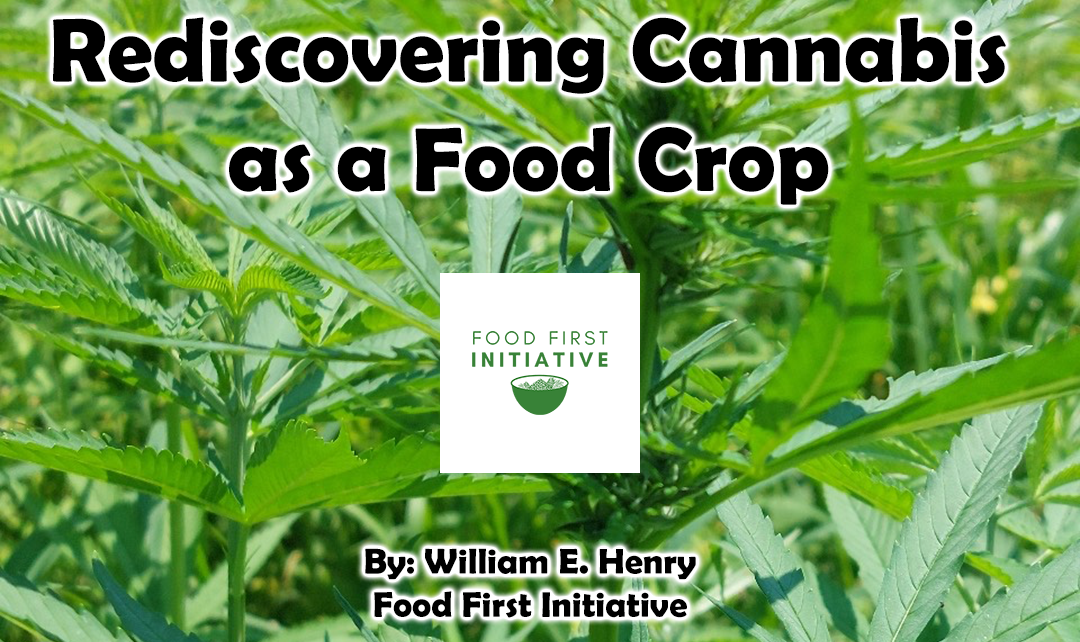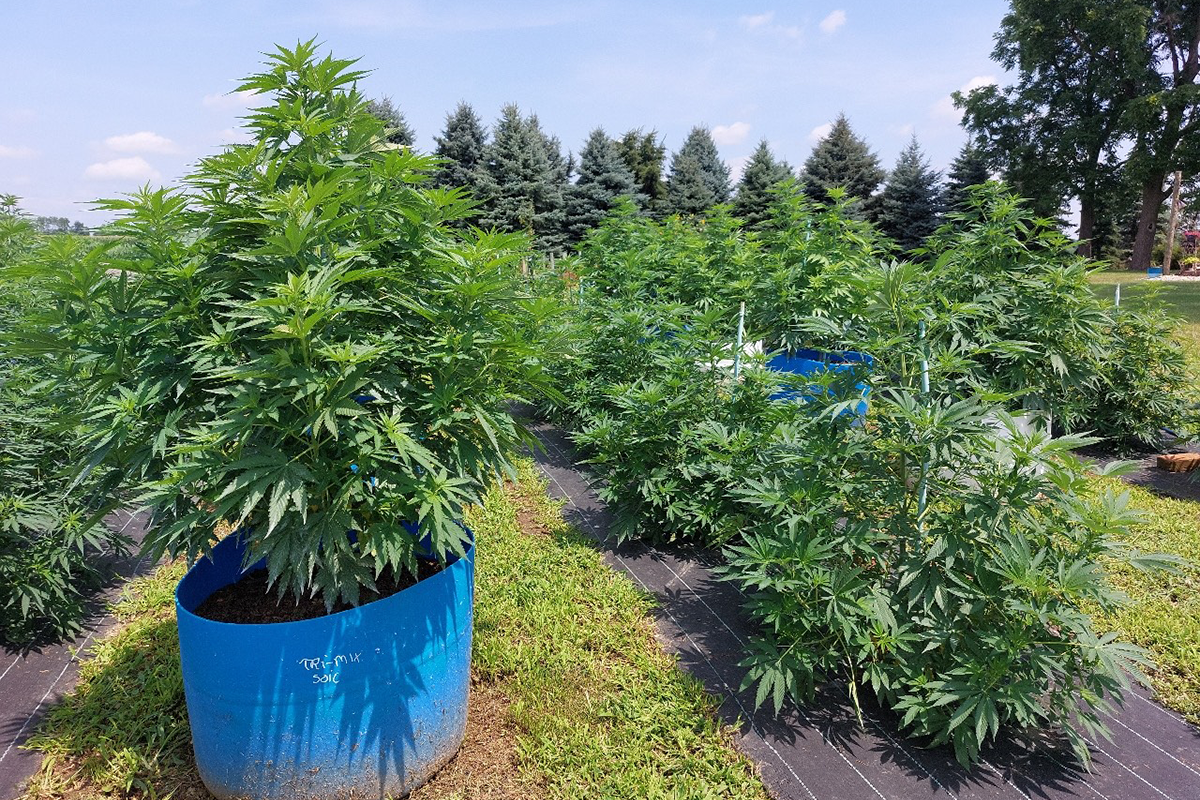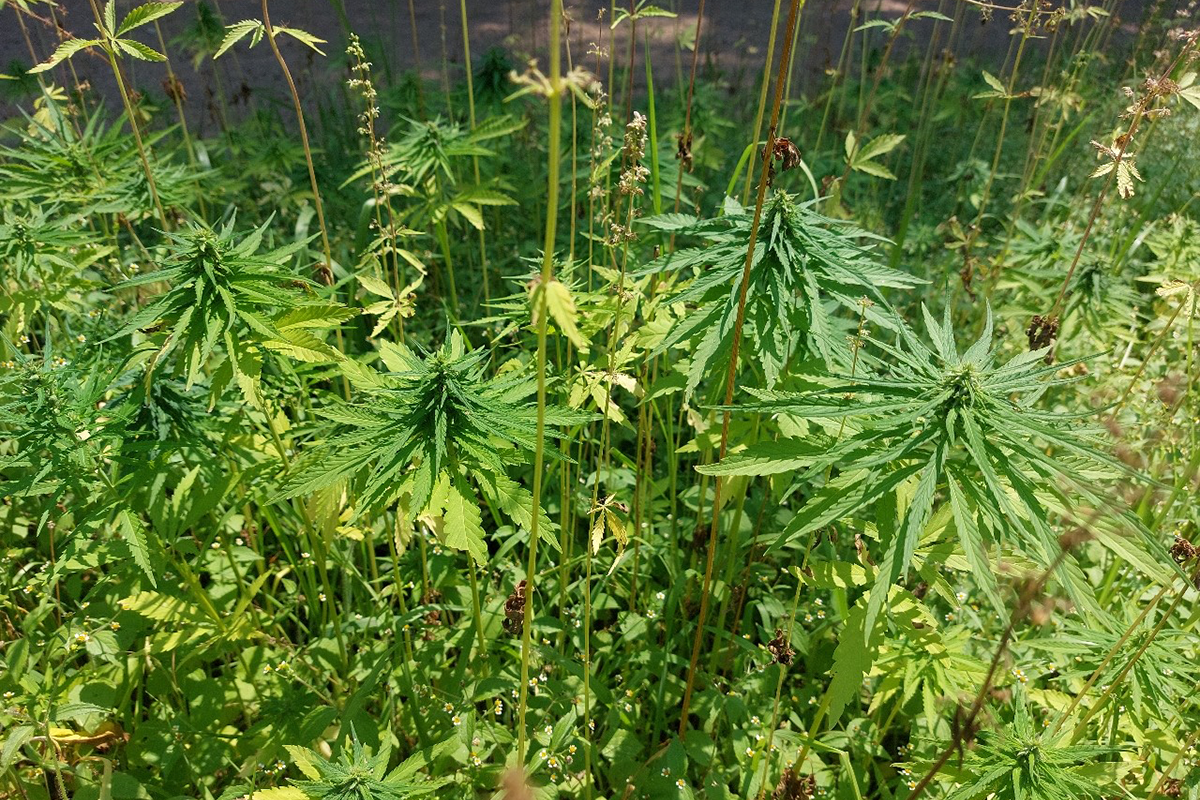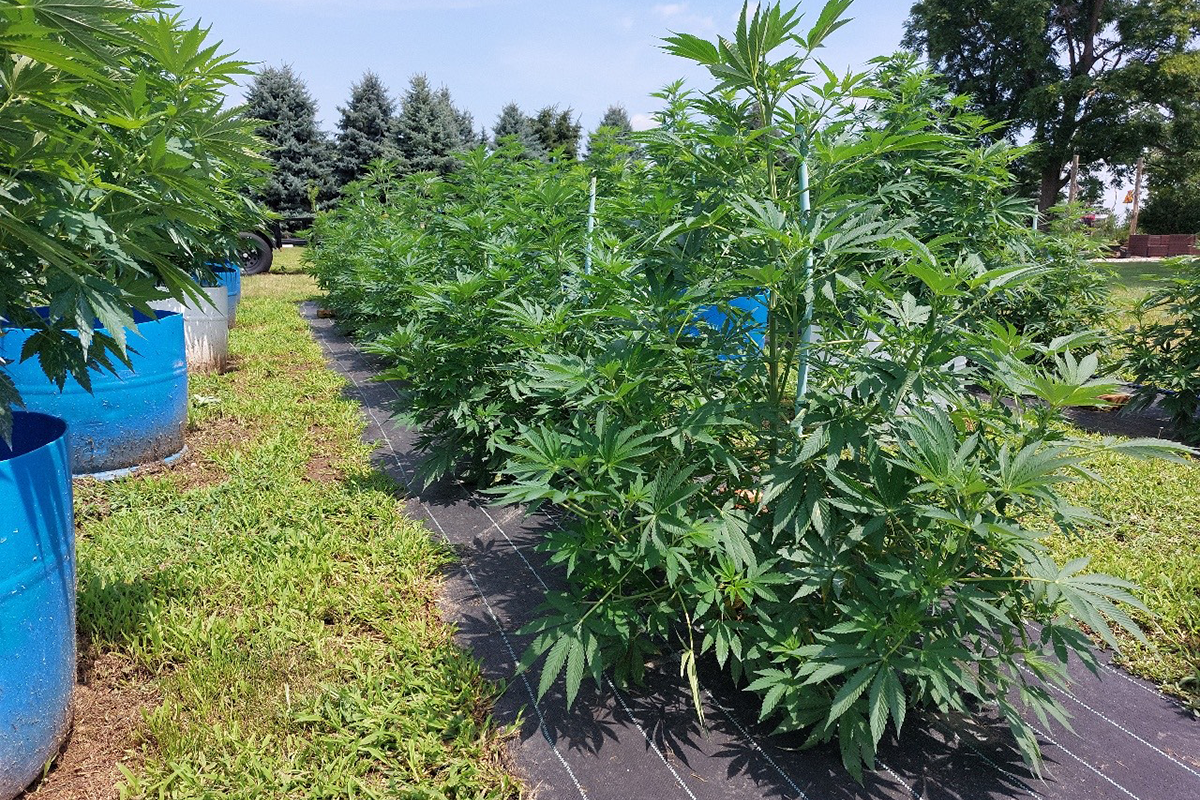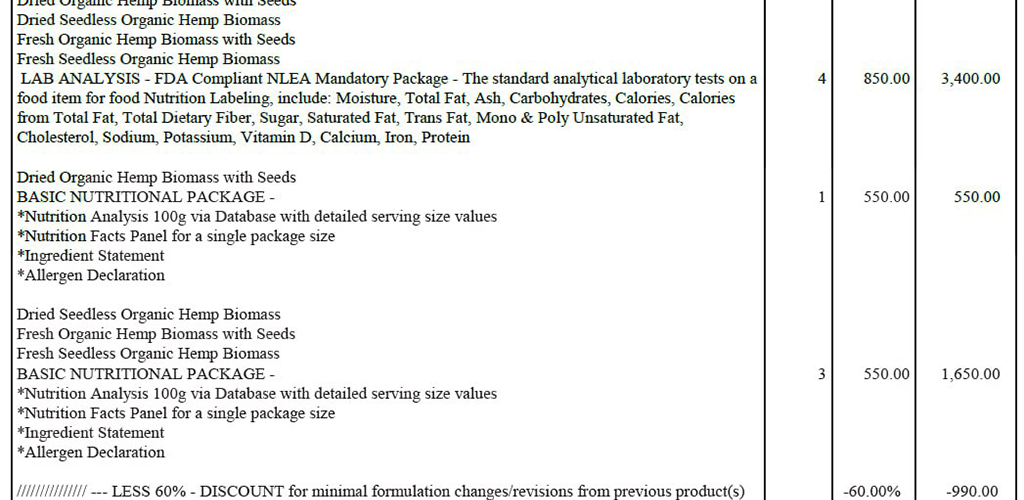1.1 Cannabis Is Food First
The idea of cannabis as a food is not new; it has been used as a food for millennia across the world—and still is today.
At one point, every habitable continent in the world had a landrace of cannabis accessible. It was only until relatively recently, in a global industrial and governmental shift, that cannabis began getting eradicated from our continents and removed from mainstream food supplies, industry, and history.
To show proof of how cannabis is a food, and use that data to make change, we must grow, test, publish, and lobby the results.
1.2 Deconstructing the Propaganda
Smoking and illicit comparisons were the main focus of movies, news, and magazine articles—and government propaganda. Those depictions struck outrage, drove stereotypes, and were a catalyst in sweeping negative reforms to get the public, foreign governments, and private companies behind the idea of outlawing cannabis.
The people driving those restrictive reforms knew exactly what they were doing by omission and never publicly revealed any research related to the nutritional content of the seeds, flowers, or leaves of the hemp plant, which they readily renamed “marijuana.”
It was for a reason. They had to make it evil. Cannabis has never killed anyone when consumed in any concentration alone. No one from the government or its agencies has ever explained why.
1.3 Nutritional Truths About the Plant
Government wholly focused its prohibition efforts on smoking and illicit comparisons—mainly categorizing it with illegal and gang activity, and dangerous and deadly drugs. Even scheduling it alongside heroin and making possession by law much worse for the consumer, than consuming it in any fashion.
Cannabis doesn’t kill because the cannabinoid acids, Omega fatty acids, essential amino acids, oils, vitamins, minerals, and nutrients of the plant material are easily processed and used by the body. It is food!
Chapter 2: TEST — Conducting What the Government Refused
2.1 The Government’s Failure to Study Hemp
No scientific study or examination of whole-plant hemp biomass nutrition has ever been overseen, completed, or made public by the U.S. Government. This is despite patents like U.S. Patent 6630507, awarded to the USDHHS in 2003 through a study, which proved cannabinoids are healthful neuroprotectants.
The study conducted by Doctors Aidan J. Hampson, Nobel Laureate Julius Axelrod, and Maurizio Grimaldi was used to award the patent. These three scientists successfully highlighted how these cannabinoids work to promote positive neurological health effects and offer protection.
The study clearly showed phytocannabinoids added to the diet removed plaques and blockages associated with Alzheimer’s, Parkinson’s, and AIDS/HIV-related dementias. It proved patients had more lucidity and clarity over time by adding the cannabinoids to their diet. Unfortunately, the patent quietly expired under USDHHS ownership with no U.S. application.
In the shadows of American and international laws, which strictly denied citizens access to cannabis, the U.S. government funded foreign and domestic cannabis studies. The U.S. funded scientists like Dr. Raphael Mechoulam in Israel, whose work ultimately led to the discovery of the Human Endocannabinoid System and further cannabinoid science health breakthroughs like U.S. Patent 8071641: Treating or Preventing Diabetes With Cannabidiol.
Further studies showed the ECS is a vertebrate-specific internal bodily system that controls every aspect of bodily regulation and homeostasis. It is our body’s command lipid signaling system.
Cannabinoids were proven to immediately stop and prevent seizures and give clarity to dementia patients when added daily to the diet.
Discovered in 1988 at St. Louis University Medical School, the Cannabinoid Receptor 1 (CB1) was first observed to activate in the brains of rats. Researchers found CB1 receptors were triggered by cannabinoids and concentrated in the central nervous system, especially in mammals.
These initial studies and discoveries have led to further research surrounding the consumption of phytocannabinoid and nutrient-acting molecules. These studies were paid for by the U.S. taxpayer, however, the science is widely unknown, or unaccepted by the majority of mainstream American medicine or physiological knowledge.
Those entering the medical or health fields are not taught about the Human Endocannabinoid System, and those exiting the medical or health fields have never heard of it.
The FDA, one of the most outspoken agencies against consuming cannabinoids in food, has never conducted a nutritional analysis on hemp biomass or any of its parts. Not once. They have only attacked phytocannabinoid acids in public—with no facts.
In fact, the FDA doesn’t even have the authority, or laboratory means to do such a study. According to the FDA Nutrition and Labeling sector, they have never dealt with labeling or nutrition information for raw federally legal hemp biomass.
The FDA also admitted they don’t have the authority to stop any food products containing raw hemp marketed as food. Even though the FDA and others have implicitly attacked certain cannabinoids added to imply that federally legal, derived cannabinoid-infused food products are dangerous or somehow violating federal food and drug policies.
While the FDA remains vocal about not allowing cannabinoids in food, they allow cannabinoids in medicine. The FDA allows dronabinol, nabilone, and cannabidiol to be prescribed by a physician for many conditions, on and off-label. The FDA understands the medical benefit to prescribing cannabinoids but remains in duality with its own policies and out of touch with the reality of the majority of citizens and modern medicine altogether.
2.2 Bureaucratic Deflection and the Interagency Loop
The USDA is the department that oversees the federal hemp program and has only tested hulled hemp seeds in 2015, prior to national legalization in 2018. That means the seeds were imported and likely irradiated, affecting the final nutritional analysis.
I contacted the USDA Hemp Program and asked if they would be willing to examine hemp. They explicitly pointed me to the USDA food researchers of FoodData Central, who conduct the majority of the nutritional testing for the USDA and U.S. Government.
FoodData Central manages the U.S. reference database for all food products used in FDA labeling and nutrition facts. We have the nutritional content of rose hips in that database—but not whole hemp biomass.
I expressed to the USDA FoodData Central leadership the need to examine federally legal hemp biomass and publish the results. The director said the agency self-limits to only 50 items a year to examine nutritionally, and there was an internal selection process to make that happen.
I asked what we could do to petition to get hemp added—and he offered no solution.
The director then informed me he would have to confer with the National Institutes of Health on whether they could perform or even oversee the study outside of the internal selection process.
I asked why they had to confer with NIH when the USDA oversees the hemp program and are the authority to determine raw hemp as a food product based on the lab exam; I was told it was what was asked of him to do from his superiors.
I was ghosted and had no further meaningful direct contact.
This type of agency loop is common between those controlling executive policy. They pretend to have bureaucratic walls and try to pass the buck. As if the agency overseeing hemp has to actually confer with NIH. It was simply a reason to refuse or delay the study through an excuse of conferring with another agency.
2.3 Taking Testing Into Our Own Hands
Eventually, I had to file a Freedom of Information Act request to FoodData Central leadership to get the standard operating procedures for the private-sector labs that will conduct the nutritional exam.
I have directly linked up with nutritional laboratories and have sourced organic U.S.-grown hemp from farmers.
We are lining up the study for completion in Fall 2025.
2.4 Study Design for Maximum Insight
The hope of the study is to examine one strain of whole hemp biomass nutrition in four ways:
- Fresh with
- Fresh without
- Dried with
- Dried without
This study will give citizens the first U.S.-grown hemp biomass nutritional information. The data will reflect fresh vs. dried and seeded vs. seedless hemp differences.
Chapter 3: PUBLISH — Making the Data Public
3.1 Why Publication Matters
What do we do with the data? Publish worldwide and lobby.
A press release and easy to understand information will be packaged and released to the public through our website, news, magazine, and internet media outlets. We want science, nutrition, and
cannabis-related news to cover our information and developments. The more we can inform the general public about this study, the more we can begin to shift the focus to nutrition and encourage further studies.
We want to inform the general public of the results and allow citizens, organizations, and individuals to demand changes at the federal, state, and local levels when it comes to cannabis regulation.
We will package the information in ready-to-use material to easily show the results and to allow more dynamic public discussions to take place.
3.2 Strategic Goals for Distribution
We will push this data worldwide through health, food, and legal channels. This information has the potential to change the entire landscape of the cannabis legalization efforts and add an angle not yet seen in the fight for descheduling cannabis completely off the Controlled Substances List.
This data has the power to:
- Break the stigma of cannabis for over a
- Offer the first nutritional profile of S.-grown whole hemp.
- Begin the shift in regulatory perspective from “drug” to “nutrient.”
Chapter 4: LOBBY — Demand Policy Change with Facts
4.1 Using Data to Push for Reform
With this data, we would like to:
- Demand the USDA recognize hemp as a food crop, first and
- Demand allowance for humans and animals to consume hemp without government
- Demand USDHHS, FDA, NIH, SAMHSA, and the USDA recognize and publish information regarding the Human Endocannabinoid System, cannabis-related benefits, and all potential positive health effects in food form.
- Demand the cessation of all public paid campaigns against
- Demand the FDA apologize for its conduct of blocking
- Demand Congress and State Houses further loosen regulations regarding hemp and deschedule cannabis.
- Demand government at all levels reduce or remove cannabis-related codes, policies, and
4.2 From Suppression to Sovereignty
This is about more than cannabis.
This is about food justice, truth in science, and undoing manufactured ignorance that has kept one of Earth’s most valuable plants suppressed under federal and state law and media misinformation.
4.3 How You Can Help: Funding the Future of Cannabis Science
We are partnering with Deschedule.Earth to help us inform the public about the study and solicit donations for the study in the private sector—which, it turns out, is much more affordable to do than through any government or university channels.
Many cannabis-related organizations and businesses are already planning, beginning to make pledges, and sending checks for the study payment—but we need your help to complete this groundbreaking study. The dollars donated through our partnership go directly to pay for the study in a collective trust.
This collective trust will expend the donated study money directly to the laboratories conducting the examination and will close out the account once the study is complete. Fundraising fees and overages will be handled transparently, and any surplus will go toward publishing results and future hemp-related studies.
We are dedicated to conducting this first-ever hemp study with the best food science professionals in the country to provide the public detailed answers about raw cannabis nutrition.
You have a unique opportunity to help and take part in this cannabis science movement by giving your support—however large or small.
This first-ever U.S. study will empower cannabis-related organizations and businesses of all types to
petition and testify to government bodies nationwide, demanding:
- Congress, state, and local governments further reduce restrictions on federally legal hemp biomass.
- Remove cannabinoids from drug testing panels
- Recognize the raw nutritional content of hemp biomass
About the Author
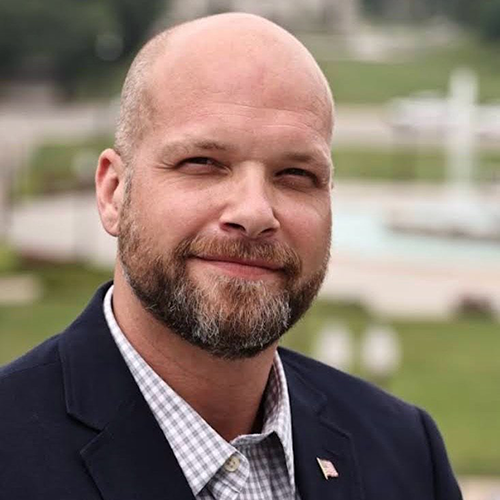
William E. Henry
Food First Initiative
William Henry is an esteemed and devoted advocate and researcher whose background encompasses a wide spectrum of roles and focuses. His impact reverberates across broad social and political spheres. Father, U.S. Army Veteran, advocate, activist, American.
